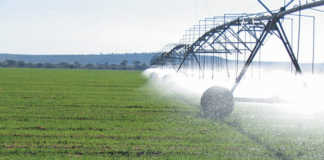“Evergreen agriculture” integrates fertiliser trees into annual food crop and livestock systems to give a green cover on the land throughout the year. It bolsters nutrient supply through nitrogen fixation and nutrient cycling, increases direct production of food, fodder, fuel and fibre, and provides additional income to farmers from tree products.
World Agroforestry centre director general Dennis Garrity and 1987 World Food Prize Laureate MS Swaminathan used the annual World Food Prize symposium in Des Moines, Iowa, to promote what they call a “fresh out of the box solution” that’s dramatically improving crop yields while storing significant carbon.
Garrity says doubling food production by mid-century when many of the world’s soils will be depleted and the planet faced with a changing climate can’t be achieved with business-as-usual conventional agriculture. “We need to reinvent agriculture in a sustainable and affordable way so that it can adapt to climate change and reduce greenhouse gas emissions,” he says.
Swaminathan says novel solutions and technological advances must be married with ecological thinking to drive a truly sustainable agricultural revolution.In a recent article in the Journal of Food Security, Garrity and his co-authors say evergreen agriculture has already provided benefits to hundreds of thousands of farmers in Zambia, Malawi, Niger and Burkina Faso.
These farmers are seeing the results of fertiliser trees that draw nitrogen from the air and transfer it to the soil through their roots and leaf litter. Exhausted soils are being successfully restored with richer sources of organic nutrients, and crop yield and income are on the rise.Farmers in Malawi have increased their maize yields by up to 280% when the crop is grown under the canopy of one particular fertiliser tree, Faidherbia albida. This trees sheds its leaves during the early rainy season and remains dormant through the crop-growing period, making it highly compatible with food crops.
In Niger, more than 4,8 million hectares of millet and sorghum are grown in agroforests that have up to 160/ha Faidherbia trees. These trees also greatly enhance carbon storage. Estimates of the carbon sequestration potential of agroforestry systems vary greatly, from less than 100 million tons a year of carbon dioxide to over 2 billion tons a year over 30 years.
Garrity and Swaminathan say a broad alliance is emerging of governments, research institutions and international and local development partners committed to expanding evergreen agriculture. “We’re already working with 18 countries across Africa to develop national plans for implementation of evergreen agriculture,” says Garrity.
Swaminathan adds, “Successful examples of evergreen agriculture from Africa urgently need further research and scaling up to create a real evergreen revolution.”The next step is to refine and adapt the technologies to a wider range of smallholder farming systems in diverse agricultural environments.













